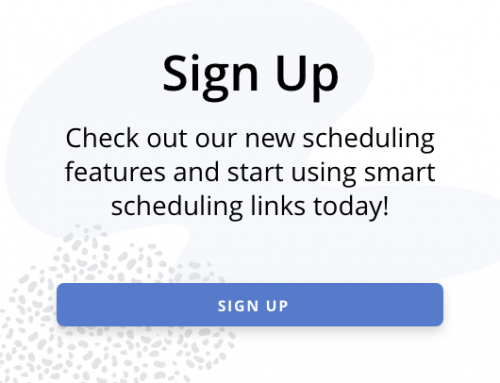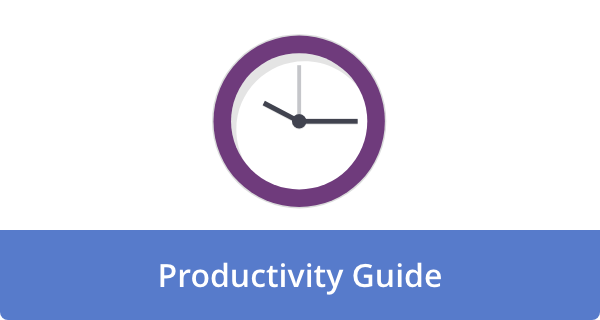

Many working professionals waste significant time each day because of inefficient scheduling habits. Practicing good time management is crucial if you want to boost your business output and maximize your profits. Fortunately, various tools and techniques are designed to help you schedule each day more quickly and efficiently. Here are a few top scheduling habits that can help you boost your productivity and minimize time waste.
Use Helpful Scheduling Tools
Are you still using an old-fashioned hanging calendar or your phone’s built-in scheduling tools to plan your week? If so, it’s way past time for an upgrade! Smart digital scheduling tools like Calendar, Google Calendar, and Microsoft Calendar can simplify planning your week and managing your time. They can boost your efficiency, send automated meeting reminders, and integrate seamlessly with apps like Zoom, Apple iCloud Calendar, and Hubspot.
Some scheduling software also offers team scheduling features. You can schedule team meetings or events; the software will instantly update your calendar and team members’ calendars. You can also send your personal calendar links to co-workers, bosses, or clients so they can schedule meetings with you based on your availability. Some scheduling tools offer daily meeting limits to prevent you or anyone else from accidentally over-scheduling meetings.
Start Each Day With a Plan
If you’re serious about boosting your business output, start each day with energy and purpose. You never want to wonder how you’ll spend your time that day. Some people find it helpful to create their daily action plan the night before. That way, they’re more likely to wake up ready to hit the ground running the following day.
There isn’t a single “correct” way to plan each day. However, you should at least include the top three priorities you need to work on or complete by the end of the day. You should also map out your meetings, appointments, and scheduled phone calls for the day. Be careful to maintain a good balance between optimism and realism. You want to challenge yourself to be productive without giving yourself so much to do that you’re bound to fail.
Prioritize Tasks
You’ve got meetings, emails to answer, deadlines to meet, and kids’ ball games to attend. When your day is filled to the brim with things you need to do, it can be hard to figure out what should come first. This is especially true when everything seems like a top priority. However, prioritizing is key to maximizing your output and minimizing time waste.
Many people find that the Eisenhower Matrix quickly identifies true priorities in their daily schedules. To use this approach, organize each of your tasks into the following four quadrants:
Urgent and important
These are top-priority tasks with pressing deadlines. They may include critical work deadlines, responding to a major customer complaint, or handling a medical emergency.
Important but not urgent
These are important responsibilities, but they don’t necessarily have to be done immediately. You should fit them into your calendar whenever you have availability after completing your urgent and essential tasks. Examples of important but not urgent tasks include financial planning, professional development, regular exercise, and backing up important files.
Urgent but not important
These duties have strict deadlines but are not necessarily critical compared to your other priorities. Therefore, you may wish to delegate them to team members who have more availability and can get to them quickly. Urgent but unimportant tasks may include lower-level meetings, unscheduled professional calls, and certain nonessential emails.
Neither urgent nor important
These are tasks that simply aren’t worth making time for or worrying about. They may include scrolling social media, pointless tasks that don’t need to be done, and making personal calls during work hours. These types of tasks often serve only as a distraction from more important things. Dropping them from your workday will help you prioritize your other tasks.
The Eisenhower Matrix helps you make the most of your day by organizing your calendar items by true priority. It also helps reduce or eliminate unimportant or unnecessary tasks. Try this scheduling technique to see if it works well for you.
Schedule Breaks
Scheduling breaks into your day may seem like the last thing you should do if you want to maximize your output. However, failing to give your mind and body time to recharge can surprisingly decrease productivity. Even worse, pushing yourself to the maximum at all times can lead to eventual burnout. There’s a good reason the Energizer Bunny is a fictional character. In reality, no one can keep “going and going and going” indefinitely.
According to a systematic review conducted by Harvard Business Review, pausing work throughout the day can boost output and lead to improved engagement and well-being in the workplace. Breaks don’t need to be long to be effective. Besides the legally mandated 30-minute breaks for every six hours of work, regular “micro-breaks” can also be quite effective. Taking just a few minutes to stretch, snack, or walk around the office can boost performance and mood while preventing exhaustion.
Say “No” to Multitasking
At some point, someone came up with the terrible idea that doing multiple tasks simultaneously could improve productivity. However, the opposite is true. The human brain isn’t designed to focus on more than one thing at once. Attempting to do so only serves to slow down the control center in the brain and can make you up to 40% less productive.
If you aim to boost output and efficiency, you’ll have an easier time reaching your goal if you focus on doing one thing at a time. For example, instead of trying to respond to emails while simultaneously working on a team project, devote all your attention to just one. Once you’re finished, devote all your attention to the next task. This will ultimately help you finish all of your tasks faster.
Try Time-Blocking
Time-blocking is a popular time management method that involves splitting your day into separate time blocks to achieve greater productivity. Specific tasks or groups of tasks are then delegated to those time blocks. For example, you might carve out a block of time from 8 a.m. to 10 a.m. to work on a specific project. The hours between 10 a.m. and noon could become your emailing time block. Arrange your time blocks according to your list of priorities so you get to the most important things first.
Time-blocking may seem simplistic, but it can significantly impact your work output. To time-block effectively, you need to know how long it typically takes you to execute specific tasks. This may require a little trial and error for the first few days. But stick with it, and you should soon become more adept at setting aside sufficient blocks of time for various responsibilities.
Conclusion
Improving your business output can lower operational costs, increase profitability, and reduce waste. Good time management is crucial for boosting production and staying on task. Implement these innovative scheduling strategies to manage each day more effectively and maximize productivity.
Featured Image Credit: Photo by RDNE Stock project; Pexels











Howie Jones
My name is Howie and I'm a Customer Success Manager at Calendar. I like to ensure our customers get the best experience using our product. If you have questions email me howie at calendar.com